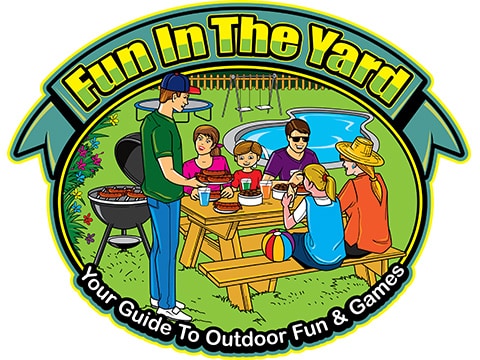No one knows when the first official kiddie pool was invented. However, there have been shallow wading pools for thousands of years, so it was probably a lot longer ago than most people assume.
Small inflatable pools began appearing around the 1940s, and people quickly adopted them for both adults and children. How do you make kiddie pool water last longer? I’ll help you figure it out and save plenty of water.
The best way to make kiddie pool water last longer is with a cover. Evaporation is the biggest water waster, so preventing it is the key to long-lasting pool fills. By using a little chlorine and a good tarp or cover, you can cut down on water changes and only dump the pool every other week.
Table of Contents
How To Keep Kiddie Pool Water Fresh
One of the simplest ways to keep kiddie pool water fresh is to drain it and refill it whenever it gets dirty. However, saving some water is always a good idea, and it reminds the kids that it’s essential not to be wasteful.
The list below are the best ways to keep kiddie pool water clean and fresh:
- Showers – A kiddie pool is a great way to get muddy kids clean. However, if you want that water to stay clean for more than a minute, have your kids do the same thing they’d do at the community pool. Showering off before you head to the water is a great way to keep excess skin oils, dirt, and debris out of the pool.
- No Detergent – Instead of tossing swimming clothes in with your regular laundry, wash them separately on high heat and skip the detergent. If you’re worried about them getting clean, add some baking soda or vinegar to the load and keep the soaps out of your pool water.
- Get A Net – A small pool skimming net will help you remove floating debris when the kids are done for the day. Better yet, have them help out with the cleaning since this is an activity even a relatively young child can assist with easily.
- Pool Bleach – You don’t need a massive, permanent, in-ground pool to treat the water with pool bleach. Just make sure you pick up the right kind and pay careful attention to the measurements and directions on the bottle. Doing this will prevent bacteria and other nasty ‘stuff’ from making a home in your kiddie pool.
- Wear Flip Flops – Running around the yard barefoot, especially when you have a kiddie pool full of water, is something most people don’t think twice about, but you should. Ask the kids to put on a pair of flip-flops when they’re playing in the yard, and they won’t track a bunch of dirt and grass in the water with them.
- Clean Feet and Legs – Shoes aren’t the only way to keep debris out of the pool. In fact, they aren’t always enough. Particularly if you have freshly mown grass or a lot of dust, you should keep a small foot-tub by the pool. Have the kids give their feet and lower legs a quick scrub before they jump in the pool, and you won’t find so much dirt inside it later.
- Cover It Up – When your kiddie pool isn’t in use, you should always cover it up. Sure, it prevents evaporation and keeps grass and leaves out, but it will also deter insects and small animals from getting into the water and drowning. There’s nothing like dead bugs to ruin your water and your fun.
How To Maintain Kiddie Pool Water
Maintaining kiddie pool water is vital if you want to keep the pool for more than a day. More importantly, it can help keep your kids from getting sick.
After all, kids like to spit pool water at each other, and you don’t want anything living in that water to get in their mouths.
Start with a scrub. You should always clean out a new or freshly dumped pool with some mild soap. I recommend using regular Dawn dish soap.
It’s gentle enough to use on wildlife after an oil spill, comes in color, and scent-free option for sensitive skin, and it shouldn’t damage the plastic. Better still, it won’t hurt your plants or grass when you rinse it out.
If your model is inflatable, I strongly recommend sticking to soft cloths when you scrub. For textured plastic pools, use a medium bristled brush, and don’t spare the elbow grease.
The texture on plastic pools that helps prevent slipping is also an excellent place for bacteria, mold, and other nastiness to hide out. When you’re finished, please give it a thorough rinse.
According to Clorox, “When chlorinating wading pools, use 1/8 cup per 100 gallons of new water. Mix the required amount of Clorox Regular Bleach with 2 gallons of water and scatter over the pool’s surface. Mix uniformly with pool water…Do not reenter pool until the chlorine residual is between 1 to 3 ppm.”
That comes out to around a quarter of a teaspoon for every ten gallons. You can check the package or manufacturers’ website to see how many gallons your pool will hold.
Then divide that number by ten. Take that total and divide again by four to get the total number of teaspoons.
How Long Can You Keep Water In A Kiddie Pool
Leaving water in a kiddie pool for a day without treating it is no problem. However, the maximum time you should leave the water inside is about fourteen or fifteen days. In short, dump your kiddie pool every other week regardless of bleach.
How To Keep Inflatable Pool Water Clean Naturally
You can use all the debris removal and preventative measures in the world, and unwanted microbes will still take up residence in your kiddie pool.
Even a pool vacuum and filter won’t stop it from happening, though it’s a good idea to have them if your ‘kiddie pool’ is big enough.
For some of us, bleach isn’t an option. Whether you’re worried about the earth, the garden, or your kids, there’s another option. You can use white vinegar.
It’s important to buy the distilled white vinegar and ensure it’s not pre-watered down. You’ll need about a half cup for every hundred gallons of water.
There are about seven and a half gallons of water in a cubic foot, and typical larger kiddie pools range from one to over two hundred gallons of water.
The little round plastic pools may have as little as fourteen gallons, especially if your children are tiny, so always check the measurements.
Fortunately, a little bit of extra vinegar in a pool full of water is a lot less likely to cause skin damage than extra bleach, but don’t go overboard, or sitting in the water will sting soft tissues.
Helpful Tips To Know About How To Make Kiddie Pool Water Last Longer
There’s nothing quite as sad as heading outside to play in the pool and finding a dry or dirty mess where your fun should be. Fortunately, maintaining a kiddie pool is simple.
Here are a few extra helpful tips to know about how to make kiddie pool water last longer.
- If you don’t treat the water in your kiddie pool, you’ll need to change it every other day. Unfortunately, it doesn’t take very long for bacteria and algae to form, so it’s better to be safe, especially with your little ones. Kids have more delicate constitutions than adults.
- When your kids are toddlers, choose a shallow pool no more than two feet deep. You should never leave them unattended, but it’s also a good idea to keep the water level low at this age. They’ll still have fun if it only comes up to their belly button, and it’s a little safer. Plus, less water means less waste and less effort to maintain.
- If you don’t have enough bungee cords or rope to go around your pool when it’s time to put a tarp over it, grab your tent stakes. You can use the reinforced grommet holes and stake the cover down tightly.
Final Thoughts
Making your kiddie pool water last longer is mostly a matter of common sense. It would be best to treat it with an appropriate amount of bleach to keep anything unwanted from growing inside.
However, make sure you measure carefully because too much bleach will cause chemical burns on human skin.
Additionally, using a tight-fitting pool cover or a tarp and some rope will prevent evaporation and keep debris and mosquitoes out of your pool water.
With a bit of planning and a couple of basic household items, you can save your pool water and your money during the swimming season.

